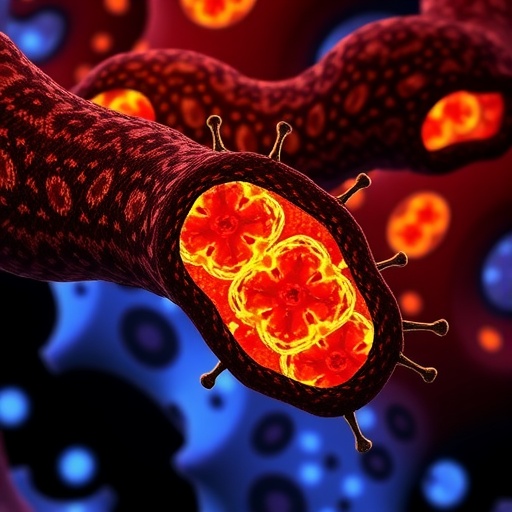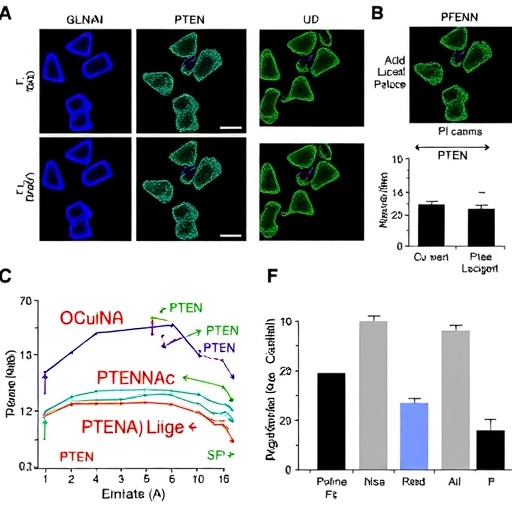In an alarming revelation that underscores the increasing complexity of drug-related fatalities, recent forensic investigations have spotlighted a fatal intoxication case involving a novel synthetic opioid known as fluoro-etonitazene, accompanied by amphetamine and clonazafone, a benzodiazepine prodrug. The intricate interplay of these substances presents a disturbing challenge to medical examiners, toxicologists, and law enforcement agencies alike, illustrating the multifaceted nature of contemporary substance abuse and its lethal consequences.
Fluoro-etonitazene belongs to the expanding category of synthetic opioids, which have surged in prevalence over the last decade due to their potent analgesic properties and high addictive potential. These substances, often manufactured clandestinely, mimic traditional opioids’ effects but are engineered to evade legal restrictions and standard toxicology screenings. The forensic community now faces the urgent task of identifying and characterizing these elusive compounds within biological specimens, as their subtle chemical variations render conventional detection methods insufficient.
The toxicological analysis in the reported case employed advanced chromatographic techniques coupled with mass spectrometry, enabling the precise delineation of fluoro-etonitazene amidst a complex cocktail of psychoactive compounds. Amphetamine, a powerful central nervous system stimulant, and clonazafone, a prodrug metabolized into a benzodiazepine derivative, were concurrently detected, painting a picture of polydrug use with unpredictable pharmacodynamic consequences. This polypharmacy scenario significantly complicates clinical interpretations and demands a deeper understanding of synergistic toxic effects.
Amphetamine’s stimulant action typically accelerates physiological processes, increasing heart rate and blood pressure, which contrasts sharply with the depressant effects of benzodiazepines and opioids. When these substances converge in the human body, the resultant pharmacological interactions may obscure clinical symptoms and impede emergency interventions. This juxtaposition of stimulatory and inhibitory drug actions creates a precarious balance that can culminate in fatal outcomes, particularly in unmonitored or recreational settings.
Clonazafone, though less familiar than its benzodiazepine counterparts, serves as a prodrug, transforming metabolically into active compounds that exert sedative and anxiolytic effects. Its inclusion in the toxicological profile alongside fluoro-etonitazene adds yet another layer of complexity to the deceased’s neurological and respiratory status prior to demise. The pharmacokinetic pathways of clonazafone, coupled with the novel opioid’s potent receptor binding, likely precipitated a profound central nervous system depression culminating in respiratory failure.
From a forensic perspective, the case highlights critical gaps in current drug surveillance systems. Many novel synthetic opioids like fluoro-etonitazene are not routinely included in standard toxicology panels, resulting in their underreporting and misclassification. This opacity hinders public health responses and policy enactment designed to curb the proliferation of such substances. The elevated technical demands for detecting these analytes necessitate investment in cutting-edge analytical methods and inter-laboratory cooperation.
Moreover, the pharmacological profiles of emerging synthetic opioids are often poorly understood, leaving clinicians and forensic experts in the dark regarding their lethal thresholds and metabolic pathways. This ignorance impairs the effective management of overdose cases and complicates medico-legal investigations. The presented fatality underscores the imperative for comprehensive research endeavors dedicated to mapping the pharmacodynamics and toxicokinetics of these enigmatic molecules.
The interrelation of these substances also brings to light the behavioral trends driving polydrug abuse. Users often combine stimulants and depressants to modulate their psychoactive experience, inadvertently increasing the risk of adverse reactions. This pattern not only challenges emergency medical care but also obfuscates cause of death determinations in forensic settings, demanding a multi-disciplinary approach involving toxicology, pathology, and clinical pharmacology expertise.
Addressing this emerging public health threat requires synchronized efforts across regulatory bodies, healthcare institutions, and forensic laboratories. Establishing early-warning systems to detect and report new psychoactive substances can enable prompt action, including updating legal frameworks and informing harm reduction strategies. Public education campaigns emphasizing the dangers of synthetic opioid mixtures are equally vital to mitigate the incidence of such tragic fatalities.
The investigation further illuminates the pressing need for standardization in postmortem toxicological protocols. Enhanced sensitivity to these synthetic compounds, alongside comprehensive screening for polydrug profiles, can improve the accuracy of cause of death determinations and provide critical epidemiological data. This enhanced accuracy supports the formulation of targeted interventions and resource allocation in combating the synthetic drug crisis.
Technological innovations such as high-resolution mass spectrometry and novel bioinformatics tools are revolutionizing forensic toxicology, facilitating unparalleled specificity and throughput in detecting trace levels of exotic opioids. These advancements empower researchers and practitioners to stay ahead of the rapidly evolving landscape of synthetic drug use, ultimately contributing to reducing mortality and morbidity associated with these substances.
Understanding the molecular structure and receptor affinity of fluoro-etonitazene offers insights into its extraordinary potency and risk profile. Studies indicate that modifications such as fluorination can dramatically enhance opioid receptor binding, resulting in analgesic effects several orders of magnitude greater than morphine. This characteristic explains the heightened overdose potential and underpins the urgent call for regulatory oversight.
The role of benzodiazepine prodrugs like clonazafone in such intoxications also demands further pharmacological elucidation. Prodrugs, due to their conversion dynamics, may exhibit delayed or prolonged effects, complicating intoxication timelines and postmortem interpretation. Investigating the metabolism and temporal interactions of these substances can illuminate mechanisms of toxicity and inform clinical guidelines.
In conclusion, the documented fatality involving amphetamine, clonazafone, and fluoro-etonitazene encapsulates the rising challenge posed by synthetic opioids within a broader polydrug context. This case exemplifies the critical intersection of chemistry, pharmacology, and forensic science required to navigate the complexities of modern substance abuse fatalities. Heightened vigilance, technological investment, and interdisciplinary collaboration stand as pillars to confront this evolving threat.
Subject of Research: Fatal intoxication involving synthetic opioids and polydrug use.
Article Title: Fatal intoxication involving amphetamine, clonazafone, a benzodiazepine prodrug, and fluoro-etonitazene, a new synthetic opioid.
Article References:
Malzacher, J., Pulver, B., Heller, N. et al. Fatal intoxication involving amphetamine, clonazafone, a benzodiazepine prodrug, and fluoro-etonitazene, a new synthetic opioid. Int J Legal Med (2025). https://doi.org/10.1007/s00414-025-03627-7
Image Credits: AI Generated
Tags: advanced mass spectrometry analysisamphetamine and benzodiazepine interactionclonazafone prodrug effectscontemporary substance abuse issuesdrug-related fatalities investigationfatal drug toxicityfluoro-etonitazene synthetic opioidforensic toxicology techniquesopioid addiction crisispolydrug use challengespsychoactive compounds analysissynthetic drugs detection methods






